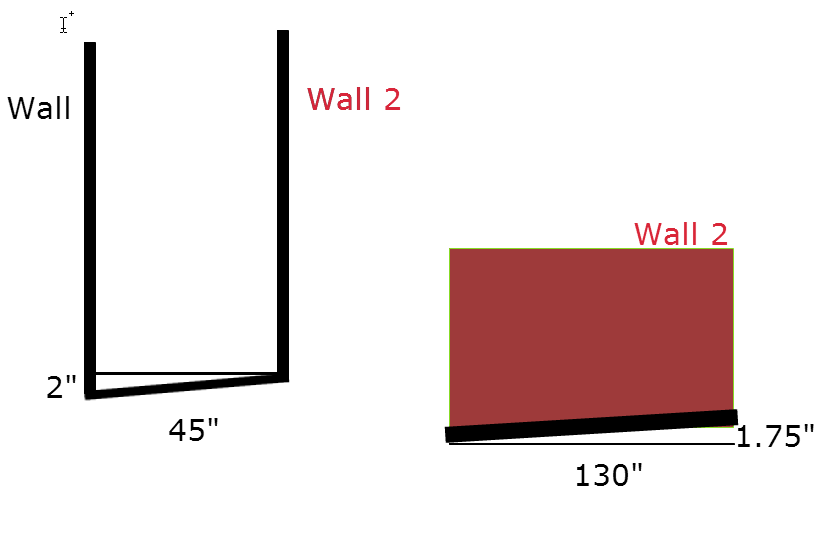We have an uneven floor that when we first moved in tried to repair but were unsuccessful. The root of the problem is a foundation slab which is uneven. We could not even it because there is an unevenness between two walls and did not want to try to mess with slab under the walls. So we actually took out the concrete and repoured the concrete but it ends up basicly the same (sheesh!!!!!).
We were in a rush to move in (new baby) and so we laid down hardwood floors onto the uneven concrete slab but the result is worse because when u walk on it u really notice this sudden dip.
Ive tried my hand at photoshop to try to draw the problem. I'll also describe it in words here
WHen you are walking down the hall there is this sudden dip which comes on over the course of 2-3" as you walk. The dip is about 2" deep as you walk forward in the hall, but also 2" between the two walls. So you are dipping on two axis. TO make matters worse, the entire hallway has a gradual decline as it goes to a bedroom.
The gradual decline is not the biggest deal to me, but the sudden dip is really killing this new house for me. Any ideas on a good way to go about repairing this. The one contractor I showed this too really rolled his eyes and swayed his head as if to say "this will cost $10million to fix".
My basic not saavy at all inclination is to rip out the hardwood floors, install some kind of plywood underneath to make some kind of straight level betwwen the two walls and have the plywood gradually go down until it reaches the level of the room at the end of the hall. Then install hardwood ontop of this plywood. Of course how do you even out the plywood. I guess lots of sanding until its even. I have no idea.
 Thanks for any suggestions!!
Thanks for any suggestions!!

